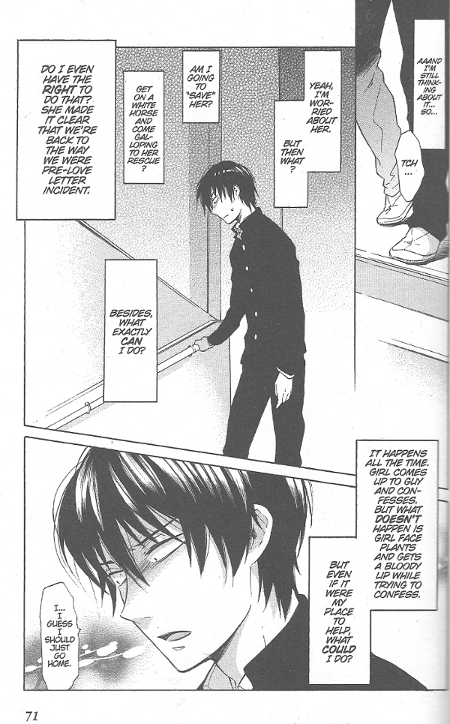ToraDora Graphic Novel
I love the ToraDora anime. The show ranks as one of my all time favourites, and I also own the first novel of the original novel, albeit mostly as a reminder that I remain barely literate in Japanese. So, when I heard that Seven Seas would publish the comic adaptation I knew I had to grab it on day one.
I didn’t have much to say about the first volume. Zekkyo, the artist, did a respectable job adapting the story, the art was good, and overall the book was enjoyable, just not anything to write home about. However, Zekkyo used most of the early chapters setting up Taiga and Ryuuji’s relationship. The other two main characters, Minori and Kitamura, received hardly any attention.
However, I expected that to change with volume two. We do get to see a little more of Kitamura, and Zekkyo also introduces the fifth and final main character, Ami, in the last couple chapters. Once she appears, Ami receives a lot of attention right away, and becomes a focal point for the last two chapters. Minori, though, continues to stay mostly on the sidelines. In the anime version, she appears frequently and often steals the show, especially in the first half, but it seems Zekkyo wants to focus on Taiga and Ryuuji. That’s understandable, of course. They are the protagonists. However, one of the anime’s strengths is how every character, even those with only a handful of lines, feels like they have a life and story of their own outside of how they interact with Taiga and Ryuuji. I would love to see Zekkyo accomplish the same here, because ToraDora has such a likable cast of characters.
Even without comparison to the anime, though, I suspect that the graphic novels would still feel claustrophobic, as Lissa Pattillo described volume one over at ANN, partly because of how verbose it gets. Flipping through the book, several pages suffocate under a tangle of speech bubbles. All the dialogue and monologue feel all the more oppressive in part, I think, because of the often dull backgrounds. Now, to be fair, Zekkyo does a fine job drawing the characters themselves, and there’s often not much to work with as far as settings go. Most scenes take place in school corridors (as on the right), walking down city streets, or at a restaurant that reminds me of Denny’s.
A few final points. As I said above, the characters are still likable, and I like how expressively Zekkyo draws them.
I also like the perspectives and panel layout, though navigating the myriad speech bubbles becomes unnecessarily difficult in some of the talkier parts.
Page 97 seems to have a printing error, where the top tenth of the page is reduplicated over the second tenth or so. I didn’t notice any such problems in volume one or in Gunslinger Girl, the only other Seven Seas release I own, so I’m hoping this is just an isolated slip-up. Let’s not turn into ADV already, please!